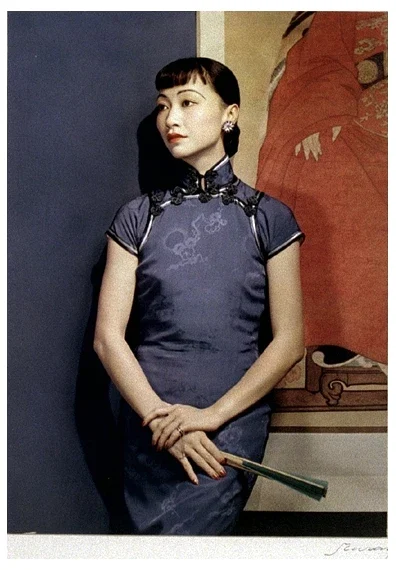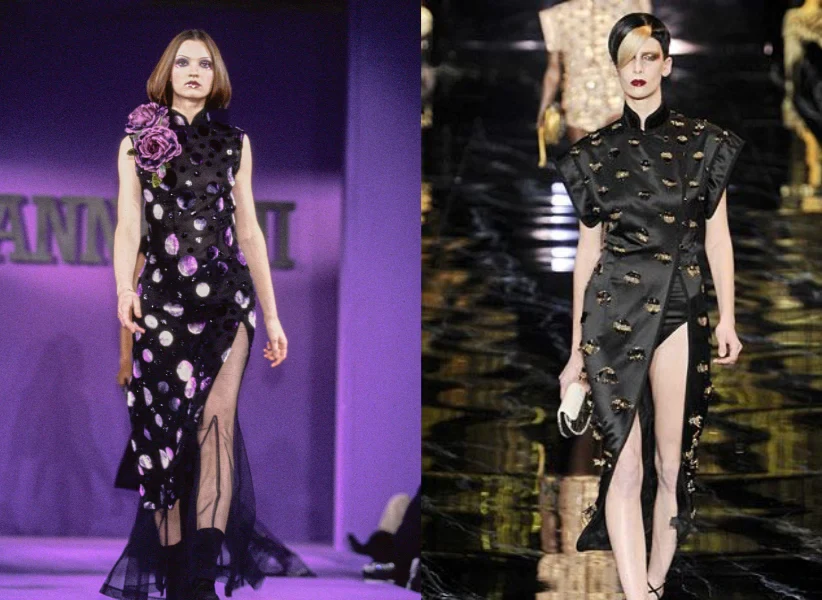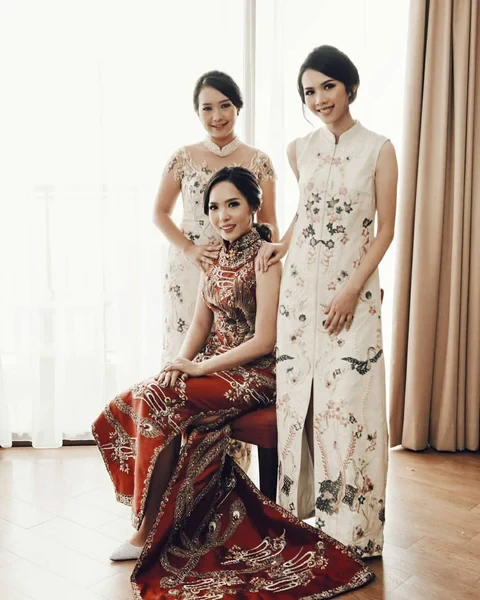
The Cheongsam: From Egalitarian Origins to Fashion Icon
Luke D. • 4/10/2025
Exploring the Cheongsam’s Cultural Legacy and Its Role in Modern Chinese Diaspora Culture Around the World
The cheongsam (in Cantonese), also known as the qipao (in Mandarin), is one of the most recognizable symbols of Chinese fashion. The dress has been worn by generations of Chinese women, from early 20th-century intellectuals to modern-day brides, around the world.
The History
The cheongsam traces its roots back to the qizhuang, the traditional clothing of the Manchu people. Manchu men wore a type of qizhuang, which was a long robe known as changpao. Then in 1912, the Qing dynasty collapsed, and the Republic of China was born. Winds of change swept through Chinese society—foot-binding was banned, women were stepping into schools and universities, and outdated traditions were making way for a more modern, egalitarian outlook. Around this time, women also began adopting a looser, more practical version of the changpao.
This new, looser form of the changpao, which consisted of a long, straight-cut dress with wide sleeves and a standing collar, started in Shanghai during the 1920s and 1930s and later became known as the cheongsam. The new cheongsam dress became very popular, worn through the streets of Shanghai, Hong Kong, and Beijing. Women embraced it as a stylish yet practical alternative to the former old-fashioned, heavy changpao. The silhouette became sleeker, the fabric choices expanded, and patterns ranged from classic embroidered florals to trendy designs.
As the decades rolled on, the cheongsam evolved to highlight the femininity and confidence of the modern Chinese woman. During the 1920s, celebrities, aristocrats, and politicians made the cheongsam become more popular among the general public. The 1930s and 1940s presented a more body-hugging fit for the cheongsam with shorter sleeves, daring side slits, and luxe embellishments like fur-lined cuffs and intricate frog closures. Pairing the dress with high heels became the norm, and before long, the cheongsam was the go-to outfit for elegant socialites, movie stars, and everyday urban women alike.

However, during the Cultural Revolution in the 1950s and 1960s, there was a shift in the political perception of the cheongsam. The cheongsam was seen as an elitist in Communist China, and wearing one was seen as being part of the bourgeoisie, which could lead to punishment. Yet, while it disappeared from everyday life in mainland China, the cheongsam thrived elsewhere in Asia. In places like Hong Kong, Singapore, Malaya, and Taiwan, it remained a staple, evolving with Western fashion influences. Women paired it with gloves, heels, and handbags, making it the ultimate fusion of East and West.

The Cheongsam in the Chinese Diaspora
Despite Canada’s Exclusion Act limiting Chinese immigration from 1923 to 1947, the cheongsam still found its way into the wardrobes of Chinese women in North America. When immigration laws loosened in the 1960s, it became more common to see older women in Toronto, Vancouver, and Montreal wearing the dress, especially for special occasions.
By the 1970s, the Canadian government’s push for multiculturalism gave the cheongsam another moment in the spotlight. Community organizations and beauty pageants—like Miss Chinatown—helped showcase the dress as a proud emblem of Chinese heritage.
In the United States, the cheongsam grew more popular as it was exposed to Western audiences and the Chinese diaspora. One of the first people to popularize the cheongsam in the U.S. was Anna May Wong, who is considered the first Chinese-American movie star in Hollywood. In 1936, U.S.-born Anna May Wong traveled to China for the first time. In an interview discussing her trip to China, Wong remarked, “I am going to a strange country, and yet, in a way, I am going home. I have never seen China, but somehow, I have always known it...Chinese in the United States suffer from a lifelong homesickness, and this somehow is communicated to their children, even though the children know nothing about their ancestral homeland.”

While in Shanghai, Wong found her connection to her Chinese identity and culture through fashion, wearing the cheongsam. When she returned to America, she brought a variety of cheongsams designed by Chinese tailors. When she appeared on MGM's variety show, she wore the cheongsam, allowing her to assert her Chinese identity and culture in America. It was also one of the first steps in popularizing the cheongsam.
Later, in the 1990s and 2000s, more Western celebrities and designers were driven to design and reimagine the cheongsam. For example, Dior American designer Anna Sui embraced cheongsam-inspired designs and silhouettes in her Spring collection in 1993. In 2011, Louis Vuitton designed their own cheongsam dress, with their own unique embroidery, silk fabrics, and figure-hugging silhouette with a lot of brocade and tassels. Beyond the runway, many Chinese Americans wear cheongsams for special occasions like Lunar New Year, weddings, or family portraits—using fashion as a way to honor their heritage and navigate their cultural identity.

The Chinese-American community continues to celebrate the cheongsam through both public exhibits. Shows like Ms. Feng’s Qipao Collection at the Chinese American Museum in D.C. (2020), China: Through the Looking Glass at the Met (2015), and Front Row: Chinese American Designers at MoCA in L.A. (2013) have all spotlighted its cultural meaning and importance to the diaspora.
The Cheongsam & Weddings
Today, the cheongsam remains an iconic choice for brides in Chinese communities worldwide. In China, as well as in the U.S., Canada, Britain, and Australia, many brides opt for a Western-style white gown for the ceremony, then change into a red and gold cheongsam for the reception or tea ceremony—a stylish nod to both their cultural roots and modern influences.The dress also evolved, with contemporary styles featuring mermaid silhouettes, lace accents, and softer, flowier skirts that blend old and new.

A Legacy That Lives On
From its rich beginnings to its modern-day reinvention, the cheongsam is more than just a dress—it’s a testament to the resilience, adaptability, and enduring elegance of Chinese culture. To this day, the cheongsam remains an iconic Chinese symbol of beauty and heritage.
References
https://theculturetrip.com/asia/china/articles/a-brief-history-of-the-cheongsam
Sim, Cheryl. Wearing the Cheongsam: Dress and Culture in a Chinese Diaspora. UK: BLOOMSBURY VISUAL ARTS, 2019.
Explore More Resources for the Asian Diaspora
We're excited to bring you blog posts that highlight the richness of the Asian Diaspora. We aim to create a space where you can find inspiration, tips, and stories that resonate with your unique experiences.
If you're in search of a makeup artist for your own wedding, we also have a directory of talented makeup artists who are experienced with Asian features. We hope it makes your wedding planning journey a little easier!
Find a Makeup Artist